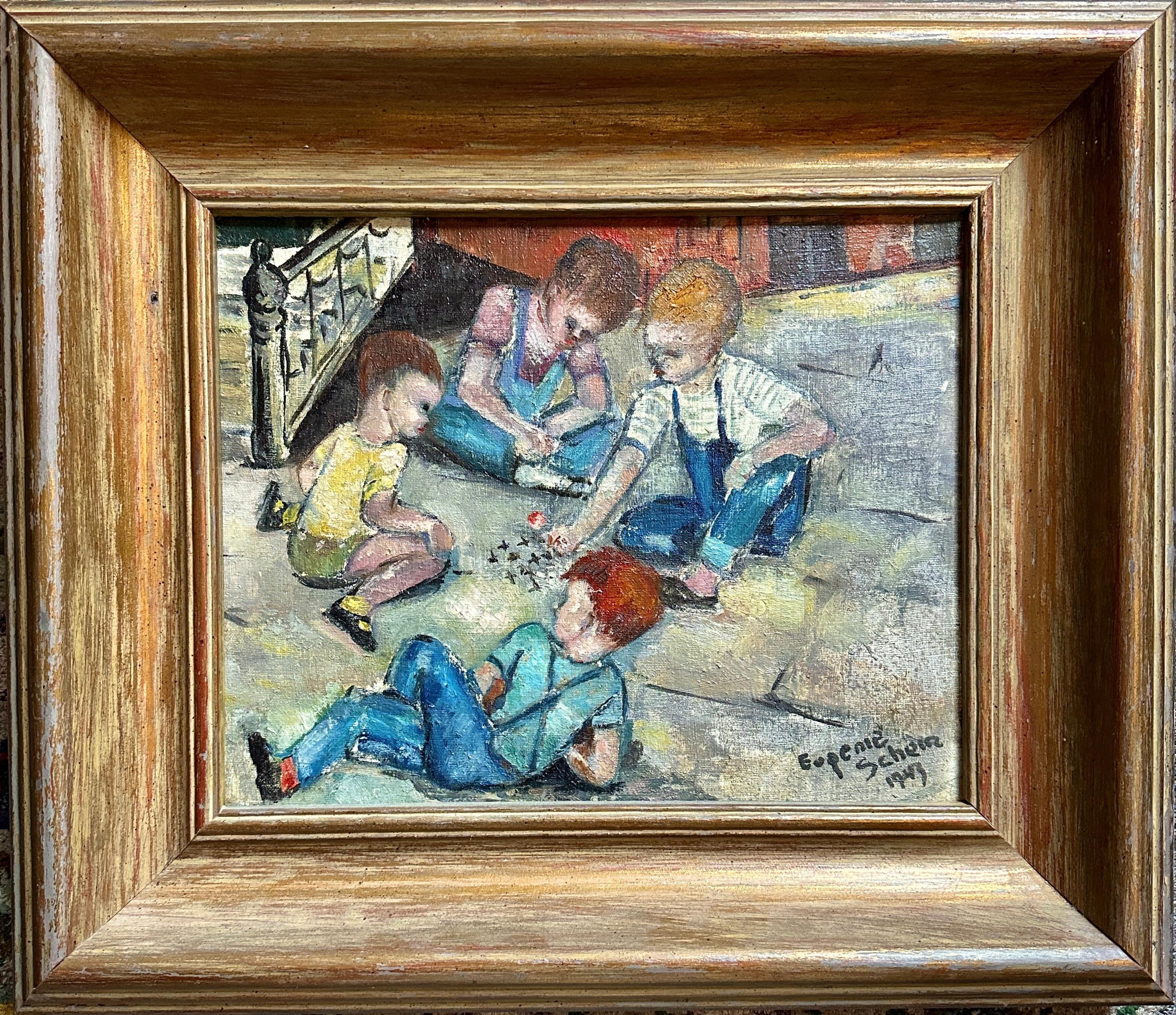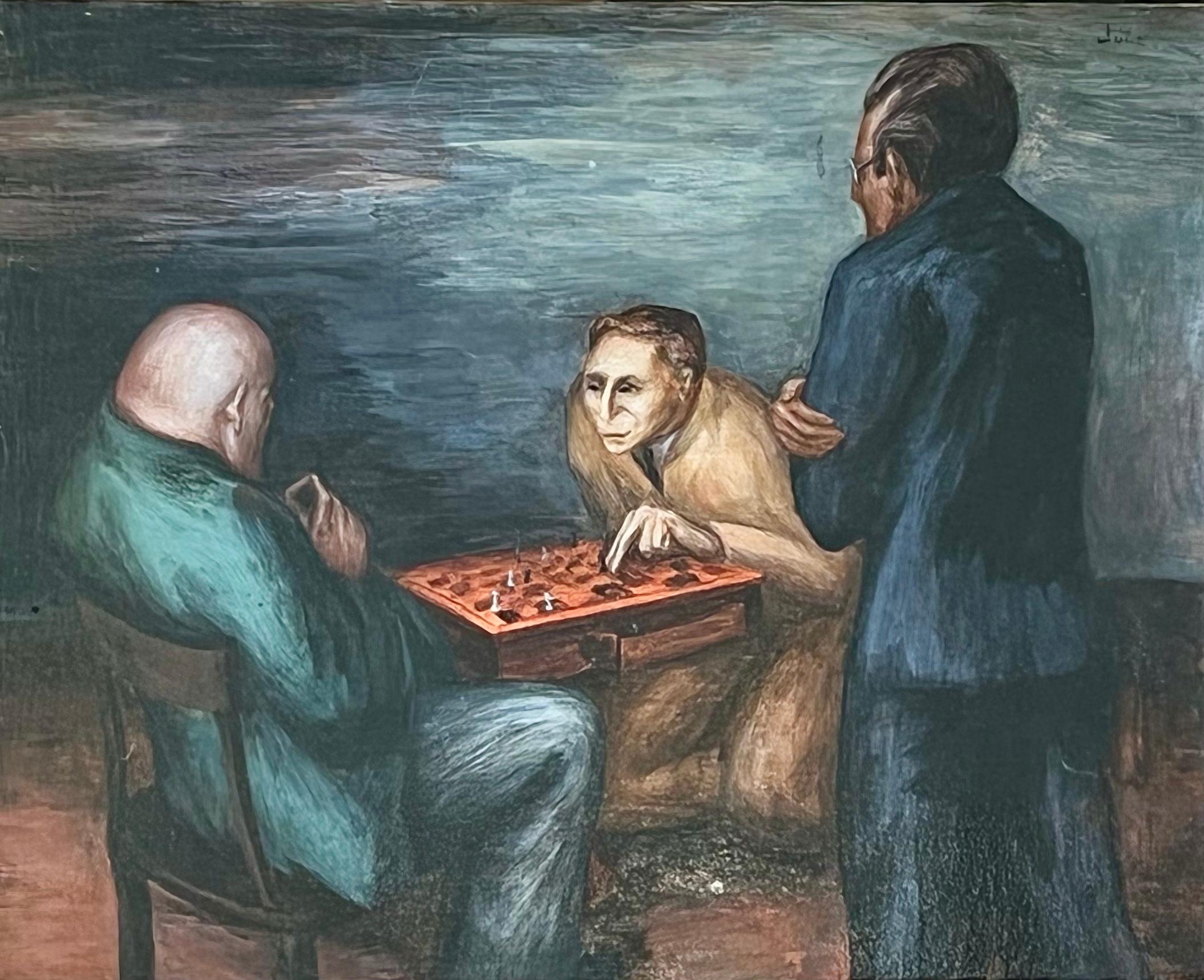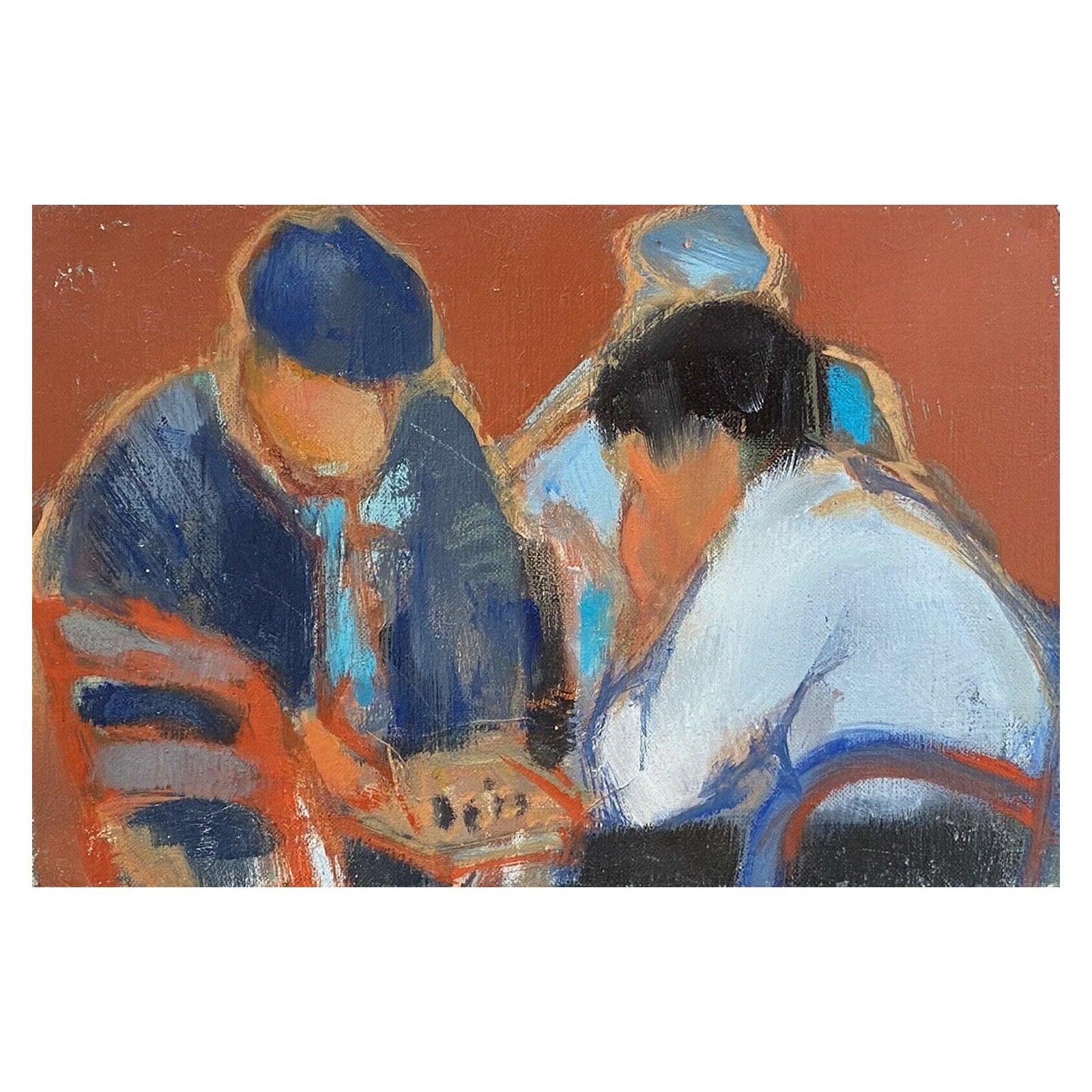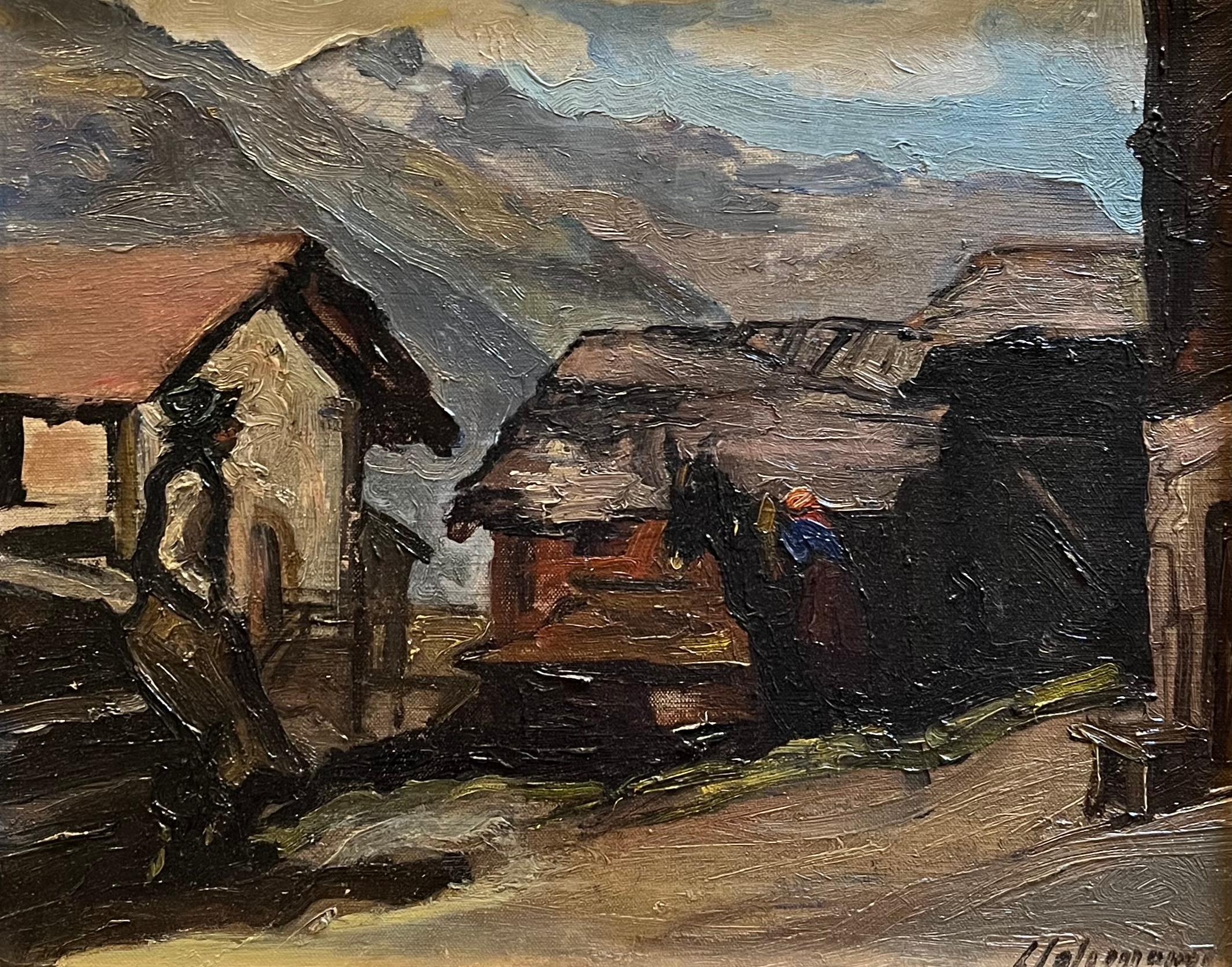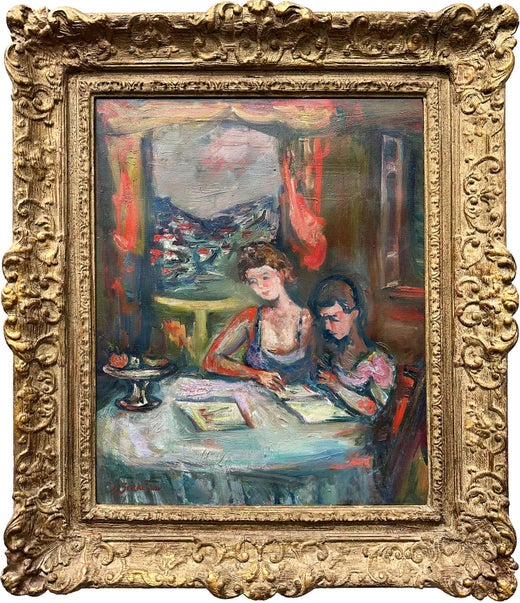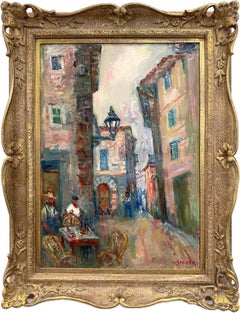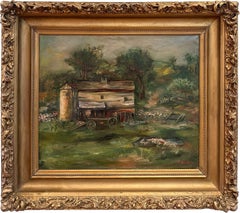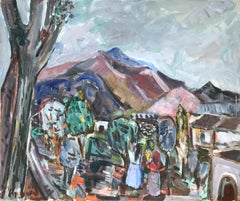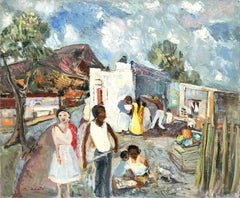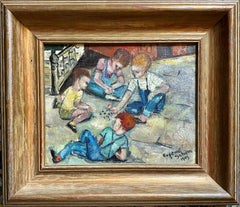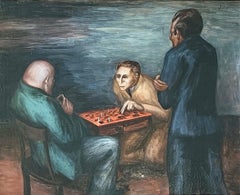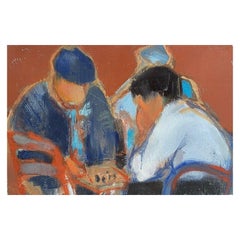Jacques Zucker"Playing Checkers" Post-Impressionist of a Mexican Village Oil Painting on Board20th Century
20th Century
About the Item
- Creator:Jacques Zucker (1900 - 1981, American)
- Creation Year:20th Century
- Dimensions:Height: 27 in (68.58 cm)Width: 33 in (83.82 cm)Depth: 2 in (5.08 cm)
- Medium:
- Movement & Style:
- Period:
- Condition:The painting is in very good condition for the time period besides in-paint to repair damage from age on upper left corner along the left edge of canvas and the frame shows some ordinary wear from age, and minor imperfections in line with the period.
- Gallery Location:New York, NY
- Reference Number:Seller: 0033801stDibs: LU9827493952
Jacques Zucker
Jacques Zucker was a prolific artist whose works are exhibited in museums and galleries around the world. Being heavily influenced by artists such as Chaim Soutine, Marc Chagall and Pierre-Auguste Renoir, we can see hints of their styles suggested in many of his works. Although he was very fond of these artists, Zucker's works are mainly impacted by his travels to Paris, America and France. Many of his works depict city street scenes, the seashore, flower still life and portraits of friends and relatives. He has developed a style completely apart from his influences, creating works that are rich in texture, color and emotion.
- ShippingRetrieving quote...Shipping from: New York, NY
- Return Policy
More From This Seller
View All20th Century Post-Impressionist Landscape Paintings
Canvas, Oil
20th Century Post-Impressionist Landscape Paintings
Canvas, Oil
1960s Expressionist Landscape Paintings
Oil, Masonite
1960s Expressionist Landscape Paintings
Oil, Masonite
Mid-20th Century Post-Impressionist Figurative Paintings
Oil, Board
1960s Expressionist Landscape Paintings
Oil, Masonite
You May Also Like
1960s Impressionist Figurative Paintings
Canvas, Oil
1940s Modern Figurative Paintings
Canvas, Oil
1930s American Realist Figurative Paintings
Oil, Board
21st Century and Contemporary Figurative Paintings
Acrylic
Mid-20th Century Post-Modern Landscape Paintings
Oil, Canvas
Mid-20th Century Figurative Paintings
Oil
